- Home
- Tom Clancy
Battle Ready Page 19
Battle Ready Read online
Page 19
I have always enjoyed teaching operations and tactics. This experience had led me to conclude that most commanders neglect the operational education of their subordinate leaders. As a result, I established an extensive officer, Staff NCO, and NCO education program in the command. All the twice-weekly officer school sessions—classes, map exercises, and field sessions—were focused solely on war fighting, and were taught or supervised by me. We made every attempt to make them fun and challenging.
I tasked my sergeant major to run the Staff NCO sessions, and (together with the battalion sergeants major) to supervise the NCO program. But I taught many of these sessions as well.
Since the contingency requirement to respond to a crisis in Korea was our most demanding potential mission, the regiment and RLT spent a great deal of time engaged in enormous exercises there, involving thousands of U.S. and Republic of Korea (ROK) troops. Conducting operations in the Korean countryside among the small villages and towns made the exercises realistic and interesting for our troops. The training was tough, often done during the winter or early spring months when the weather was extremely harsh.
TWICE MY MEU was called out to handle crises in the Philippines, when assassins from the NPA, a Philippine terrorist group, murdered U.S. military personnel.
In the first incident, U.S. airmen from Clark Air Force Base were killed in the town near their base. In the second, the U.S. military attaché to the Philippines, Colonel Nick Rowe, was shot while driving in Manila (Rowe was a hero, having escaped from Vietnam after surviving years of captivity there).
Our mission following both incidents was to provide immediate security to the naval base at Subic Bay and the nearby naval air base at Cubi Point. Our units patrolled the jungle around the bases and provided security for forces required for missions outside the bases.
I knew this jungle well, since we had done extensive training there. The Negrito scouts, from one of the many Philippine ethnic groups, had conducted the jungle training, and they were superb—teaching us about jungle plants that stopped infections and bleeding and helped wounds heal quicker, about other plants that were ordinarily poisonous but which could be bleached (to remove the poison) and eaten, and much else . . . a tremendous wealth of field skills. Though I had taken a number of jungle training courses and had firsthand experience in Vietnam, these scouts taught me more about jungle craft than I had ever learned before.
The most significant event during these deployments came when the admiral in charge of our forces in the Philippines decided we should conduct a humanitarian mission after a fierce typhoon had hit a remote area of southeastern Luzon. When U.S. troops were locked down on the bases the resulting tensions from the loss of revenue to locals had started to cause problems. The admiral saw the opportunity to help the ravaged coastal villages as a way of easing some of these tensions and improving relations.
The humanitarian mission he laid on us required my aircraft, C-130s and CH-53s, to move relief supplies. The C-130s flew the supplies to a dirt airstrip in the region, while the big CH-53 helos took the supplies from the dirt strip staging area into the villages.
Though I certainly appreciated the humanitarian and public relations benefits at a sensitive time, I was not comfortable with the mission. The area we were operating in was over three hundred miles from our base, and no one was paying much attention to security requirements and potential threats from the NPA and other terrorists and local insurrections.
Our aircraft ran the first missions with no problems and were into the second day of operations when I received a call that one of our CH-53s had made an emergency landing in a village and suffered minor damage. No big deal, my squadron asserted. They’d make a quick inspection and minor repairs, and the helo would be out in a few hours.
That estimate turned out to be wildly optimistic. . . . The fallen helo was about to become the bane of my existence.
The next day, the news from the helo was not so positive. Damage was now seen to have been somewhat worse than originally reported, but the CH-53 could still be easily fixed.
“Okay,” I said to myself, but when I asked the Philippine Marines about local security and threats from bad guys I was shocked to learn that this particular area was heavily threatened and influenced by the NPA. The situation there was so bad that the Philippine military sent in only their most elite forces, Marines and Rangers. Though I was aware that these forces were operating in the region, I had not connected that with the threat information. My upset got worse.
I immediately ordered my battalion to rush a satellite communications- equipped platoon to the village to provide security for the one more day of work needed to get the helo functioning.
When the platoon arrived, its commander reported that the village chief was worried that all of this American military activity would attract NPA guerrillas. The platoon commander had accordingly set up security for the helo and the village. That was the good news. The bad news was that the helo was actually in much worse condition than previously reported.
I decided to get down to the village for a firsthand look. After putting my executive officer in charge of the security mission at the naval bases, I scheduled a C-130 to take me and additional security personnel to reinforce our platoon down to the dirt strip near the village. From there, we’d move on to the village by helo. We were to leave the following morning.
That night I was awakened by an urgent report from the platoon commander at the village. The NPA had killed a villager and left his body near our positions; an attached note threatened our troops. I immediately ordered more troops added to the security force on the C-130.
Before we landed the C-130 at the dirt strip, I had the pilot fly over the village so I could get a sense of the area.
The downed helo was an incredible sight. “Minor damage? No big deal?” Forget about it. It was stuck in the mire of a coastal tidal stream; its blades snapped off. This was no minor, easily repaired problem.
After flying into the village via chopper, I made a quick inspection of our position with my battalion commander, then turned the security situation over to him and turned my attention to the helo. I came down on the squadron like a ton of bricks. This, I learned, was how the crash came about:
The lieutenant flying the CH-53 had overloaded it with heavy sacks of food. As he was coming into the tiny landing zone in the center of the village, it hit him at the last moment that the zone was too small for his big bird. He pulled up sharply, but the weight onboard did not let him get the lift he needed, and he settled into the nearby tidal stream, just missing the straw huts crowded between the LZ and the water.
Time then became a critical factor. The tide was coming in within a few hours. When the helo could not be repaired as quickly as everyone had hoped, the rising saltwater tide set it drifting into the trees bordering the stream, which further damaged the bird, making it impossible to get it out on its own power. It was now stuck in the mud.
I was furious. I understood the squadron’s focus on repairing the helo and appreciated their round-the-clock efforts to work on the bird under difficult conditions, but the squadron’s failure to accurately report the status of the helo was inexcusable. Their failure had caused me to put them in a very dangerous situation for more than a day.
That wasn’t the only source of my fury. Those who had tasked us with this mission had failed to properly analyze the intelligence and security situation, and I expressed my feelings to those up the chain of command who needed to pay more attention to what was going on. Fortunately, we had Philippine Marines in the area to help.
We eventually arranged for a powerful CH-53E to pull the helo out of the muck. From there it was to take the damaged helo to a recovery tug offshore. The operation started out all right. The CH-53E successfully raised the busted bird; but on the way to the tug, the CH-53E dropped it into the Philippine Sea.
The tug skipper said, “Not to worry. I can easily recover it from the seafloor.”
He ac
tually made good on his promise, and the tug recovered the helo, then brought it to the naval base and dumped it on the shore near our own base camp . . . now a total write-off.
The story does not end there.
On a later deployment, we were ordered to clean up the helo and put it aboard a ship bound for Okinawa. Since it had been sitting on the edge of the jungle for almost a year, the cleanup was a tough job. In the helicopter’s current condition, the Navy was not eager to have it aboard their ship, and this caused heated discussions.
The helo was again making my life miserable.
When we got the helo back to Okinawa, it was placed at Camp Hansen, for use in training on helicopter embark and debark drills (old helo hulks are often used for this purpose). And there it sat, in clear view, every day for the remainder of my tour, as a reminder of all the griefs it had dragged me through.
DURING MY tour of duty with the Striking Ninth, General Gray called me back to Washington several times to participate in studies aimed at tackling the many problems arising from the inevitable shrinking of the military. He wanted the Corps to be able to reduce personnel and forces with minimal disruption and without losing capabilities. These were hard efforts to sell. Though the commandant’s study group had a highly select membership from all over the Marine Corps, several commanders fought our recommendations. Nobody wanted to give up anything. Nobody wanted to face the reality of impending reductions and change.
Meanwhile, it became increasingly difficult for me to handle these time-consuming studies while running my other duties on Okinawa—a conflict that General Gray did not fail to notice. “I doubt that you’ll finish a regular three-year tour of duty on Okinawa,” he told me.
He was right. After two years and a couple months, I received orders back to Quantico, where I was to become the chief of staff of the Training and Education Center, an organization recently established by General Gray to implement the changes he had directed. My experience in this area made it inevitable that I’d be returned early to help.
CHAPTER FOUR
THE NEW WORLD DISORDER
QUANTICO’S TRAINING AND EDUCATION Center was a General Al Gray innovation—part of his overall effort to revitalize the Marine Corps’ education system. The aim of the center was to improve Marine training by providing realistic and demanding standards (which would define a Marine, the duties of his occupational specialty, the responsibilities of his grade—i.e., rank—and the duties of his billet—e.g., squad leader); and by providing methods for testing and evaluating whether these aims were being achieved in individuals and units.
These innovations were significant and far-reaching; and given the realities of a change-resistant military culture, their implementation was not a sure thing. Gray wanted a ramrod who shared his vision and had the credibility and capability to make it all happen. Zinni got the call to be chief of staff at the center.
Just before Christmas 1989, less than six months after arriving at the center, Zinni received a congratulatory phone call from Gray; he had been selected to the grade of brigadier general.33
The Marine Corps is a very lean organization . . . the opposite of top-heavy. Meaning, there are very few generals, and selection for the promotion is a true honor. Every year, perhaps one in ten Marine colonels make the leap to general officer. Of these only three or four come from the ranks of infantry colonels, such as Zinni.
Though Gray wanted Zinni to be assigned within the Marine Corps after the promotion, Zinni’s friend Jack Sheehan had other ideas. Sheehan, now a major general (he would later go on to be the commander in chief of the Atlantic Command), headed the personnel assignment division at Corps headquarters. If Zinni was going to have a shot at rising higher, Sheehan knew he would need what is called “a joint tour”—a position at a command staff manned by all the services.34 Sheehan had just the place for him—a onetime near backwater that the fall of the Soviet Empire was just about to make one of the busiest spots on the planet.
After the holidays, Sheehan informed Zinni that the following summer he would become the deputy director of Operations at the U.S. European Command (EUCOM) in Stuttgart, Germany.
“This is the very best joint tour we have,” Sheehan told him. “It’s hands down the best billet for Marine Corps brigadiers.”
“Sure, sure,” Zinni was thinking. “But, Jeez, what I’d really like is to be an assistant division commander or something like that in the Marine Corps, and forget the joint crap. What I’m getting is maybe okay for a staff job, but it’s still a staff job and goddamned painful.”
On the other hand, Zinni was excited about being a general. “So you’ve just gotta go over there two years and gut it out,” he told himself, “and hope you get something real when you come back.”
Later, after he was in Europe actually witnessing the landslide of transformations following the end of the Soviet Union, he began to have a very different take on his new job. “This place is changing,” he told himself then. “It’s getting exciting over here. We’re seeing something entirely significant taking place.”
Before going to EUCOM, Zinni attended the Capstone course for new one-stars at the National Defense University in Washington.
THE COLLPSE of the Soviet Empire came with a whimper. The bangs came later—almost always in unexpected places . . . as unexpected as the actual end of the empire. No one had predicted it. It happened so fast that even the most savvy foreign policy and intelligence professionals failed to get a handle on the specific events, much less to grasp their bigger picture implications. The disintegration started in ’89 when Gorbachev’s perestroika first let the demons out of the bottle. Later, Boris Yeltsin tried to pick up the pieces, but with limited success. What had once been the huge, proud, and powerful USSR had within a year fractured into separate republics, including Russia, Ukraine, Belarus, Georgia, the Baltics, and the Stans.
The Soviet rapid free-fall collapse caused a series of quick reactions from the Western powers. Since the collapse was unforeseen, the reactions were unplanned—and inadequate. It was astonishing that the collapse came as such a surprise . . . or that none of the Western leaders had thought through what to do if containment actually worked and the Soviet Union imploded. “But here we were,” says Tony Zinni, “scrambling to stay ahead of remarkable events that surprised us virtually every day.”
This was not the hoped-for replacement of a worn-out and discredited communist structure with a new, better democratic and free-market one. The fall was far messier than that. True, the old structures had mostly vanished; but their replacements are even now nearly fifteen years later only still emerging. Nobody in or out of the former Soviet Union (FSU) had any idea about what had to be done next. So not very much was done.
When the Soviet Empire slouched off the world’s stage, there was a certain amount of euphoria (many wrongly imagined, for example, that its departure would remove the nuclear threat) and even more relief. “Thank God,” Americans sighed, “the Cold War is over. The Big World will take care of itself. We no longer need the vast, powerful military presence that kept the Evil Empire checked. Peace will bring incredible material dividends. Now we can go about our smaller, private business and get on with our personal lives. Everybody’s going to be secure . . . and happy.”
President Bush announced the emergence of a New World Order . . . without defining it.
It’s hard to find anybody then who realized that the fifty-year-old bipolar world structure—for all the risks and dangers it represented—had kept the lid on myriad and terrible demons . . . demons that made the ones Gorbachev had let loose almost seem harmless as spaniels.
Since conflict in the first and second world heartlands had been unacceptable, the superpower competition had mostly played out in the third world peripheries, where the norm among governing regimes was illegitimacy, instability, and corruption. No problem, these regimes could be propped up, bought off, or provided with military backing by one or the other superpower, in exchange
for their support. Thus the world’s balance was maintained . . . though at the price of denying better lives to third world peoples. No matter. They didn’t have much to live for anyway.
But the long-suppressed demons of ethnic and national competitions and ancient seething hatreds and blood feuds remained alive. Once the lid was removed and the demons released, nobody was prepared to deal with them.
The Balkans exploded. The Horn of Africa. The Middle East. Iraq. West Africa. Rwanda. Zaire-Congo. Afghanistan. The Philippines. Colombia . . . And this is only a partial list.
THE CAPSTONE course is designed to give new brigadier generals and admirals35 a heads-up on major strategic and national security policy. It lasts a relatively short six weeks. Part of the time is spent in study and seminars. Part of the time is spent with very senior leadership in Washington. And part of the time is spent in travel, talking with CINCs and other combatant commanders.
Zinni’s Capstone class trip, in March, took him and a handful of his Capstone colleagues to Europe—to Naples, where there’s a NATO and U.S. naval command; to Brussels and NATO headquarters in Belgium; to Germany and to EUCOM headquarters in Stuttgart; to Army headquarters in Heidelberg; to Air Force headquarters at Ramstein; and to Berlin. Their briefings at these commands all indicated that the impending collapse of the Soviet Union was about to unleash tremendous changes—changes that U.S. forces in Europe were having difficulty understanding or accepting. The rapidly unfolding events in Eastern Europe and the Soviet Union were occurring so fast that U.S. and NATO leaders could neither grasp their implications nor make studied adjustments to them.
During their visit to Berlin, the Capstone team’s escort, a feisty second lieutenant from the U.S. Berlin Brigade, suggested an excursion through the recently abandoned Checkpoint Charlie into East Berlin. At that time, this was a bold idea. The famous security barrier that controlled access between East and West Berlin had ceased operation, there no longer being a reason for it. But its absence had left a rules vacuum. Nobody knew what regulations—if any—governed travel between the two parts of the no-longer-divided city. The new flag officers’ only guidance: They had to wear their uniforms.

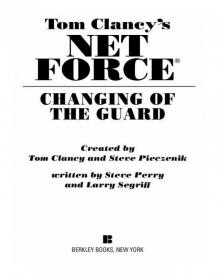 Changing of the Guard
Changing of the Guard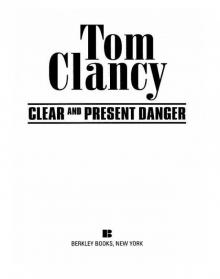 Clear and Present Danger
Clear and Present Danger Hounds of Rome
Hounds of Rome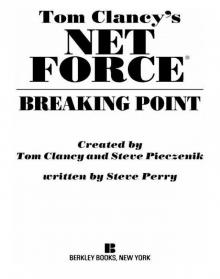 Breaking Point
Breaking Point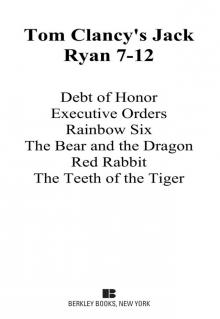 Tom Clancy's Jack Ryan Books 7-12
Tom Clancy's Jack Ryan Books 7-12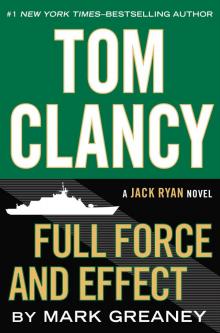 Full Force and Effect
Full Force and Effect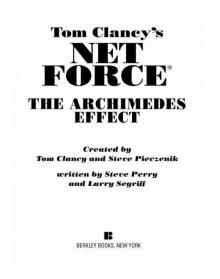 The Archimedes Effect
The Archimedes Effect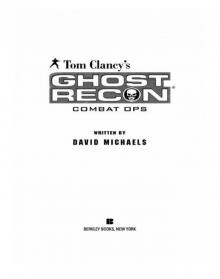 Combat Ops
Combat Ops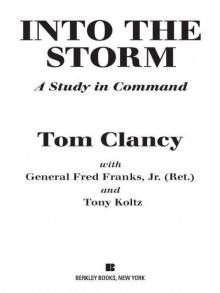 Into the Storm: On the Ground in Iraq
Into the Storm: On the Ground in Iraq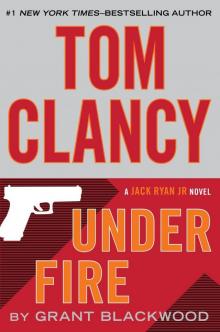 Under Fire
Under Fire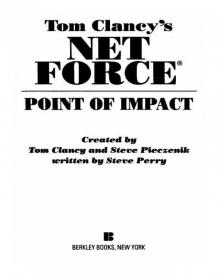 Point of Impact
Point of Impact Red Rabbit
Red Rabbit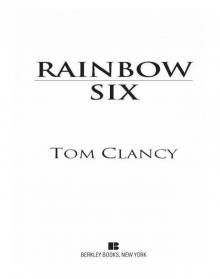 Rainbow Six
Rainbow Six The Hunt for Red October
The Hunt for Red October The Teeth of the Tiger
The Teeth of the Tiger Conviction (2009)
Conviction (2009)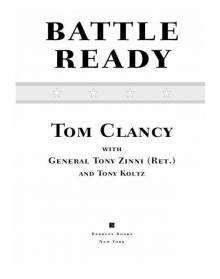 Battle Ready
Battle Ready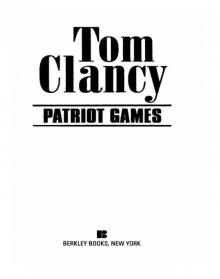 Patriot Games
Patriot Games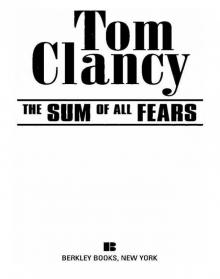 The Sum of All Fears
The Sum of All Fears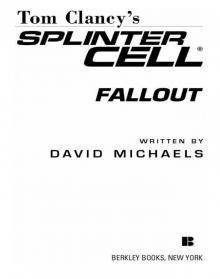 Fallout (2007)
Fallout (2007) Red Storm Rising
Red Storm Rising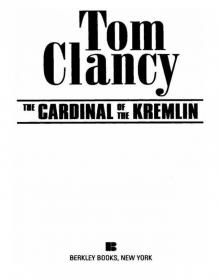 The Cardinal of the Kremlin
The Cardinal of the Kremlin Executive Orders
Executive Orders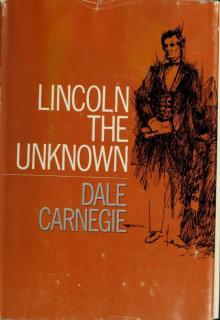 Lincoln, the unknown
Lincoln, the unknown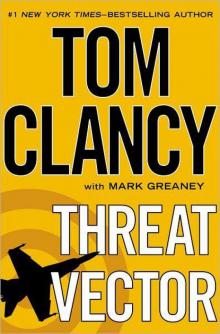 Threat Vector
Threat Vector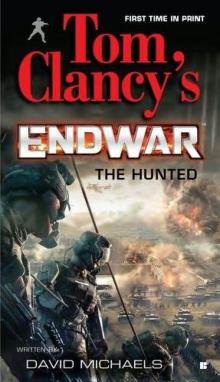 The Hunted
The Hunted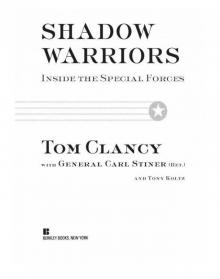 Shadow Warriors: Inside the Special Forces
Shadow Warriors: Inside the Special Forces End Game
End Game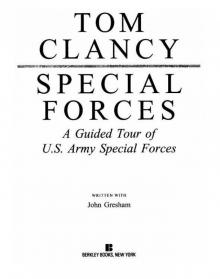 Special Forces: A Guided Tour of U.S. Army Special Forces
Special Forces: A Guided Tour of U.S. Army Special Forces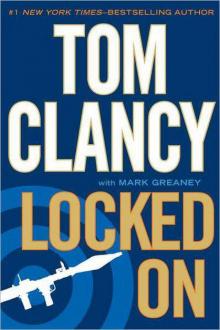 Locked On
Locked On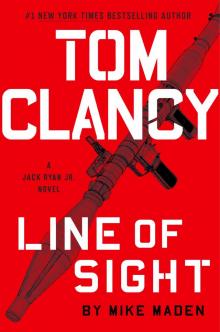 Line of Sight
Line of Sight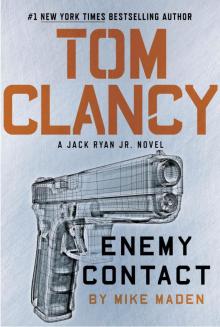 Tom Clancy Enemy Contact - Mike Maden
Tom Clancy Enemy Contact - Mike Maden Fighter Wing: A Guided Tour of an Air Force Combat Wing
Fighter Wing: A Guided Tour of an Air Force Combat Wing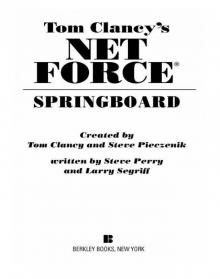 Springboard
Springboard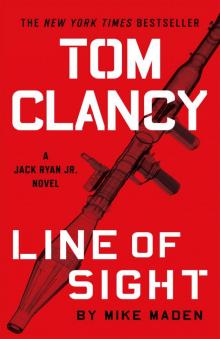 Line of Sight - Mike Maden
Line of Sight - Mike Maden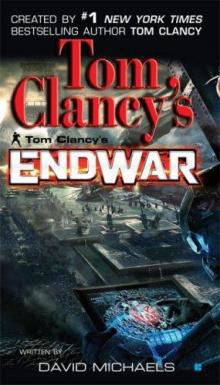 EndWar
EndWar Dead or Alive
Dead or Alive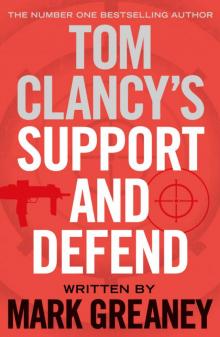 Tom Clancy Support and Defend
Tom Clancy Support and Defend Checkmate
Checkmate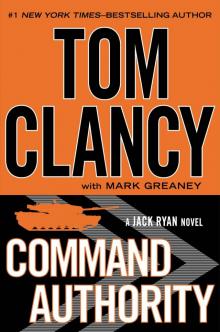 Command Authority
Command Authority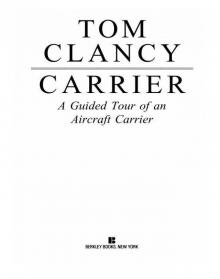 Carrier: A Guided Tour of an Aircraft Carrier
Carrier: A Guided Tour of an Aircraft Carrier Blacklist Aftermath
Blacklist Aftermath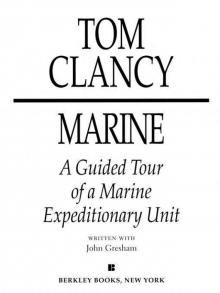 Marine: A Guided Tour of a Marine Expeditionary Unit
Marine: A Guided Tour of a Marine Expeditionary Unit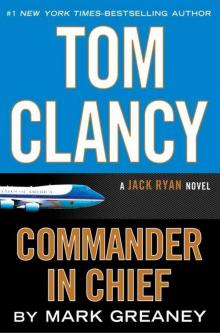 Commander-In-Chief
Commander-In-Chief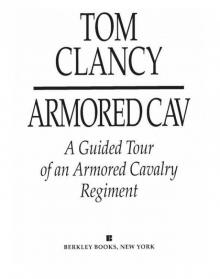 Armored Cav: A Guided Tour of an Armored Cavalry Regiment
Armored Cav: A Guided Tour of an Armored Cavalry Regiment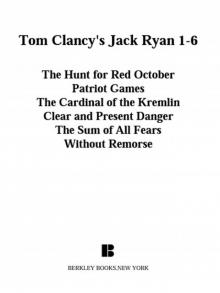 Tom Clancy's Jack Ryan Books 1-6
Tom Clancy's Jack Ryan Books 1-6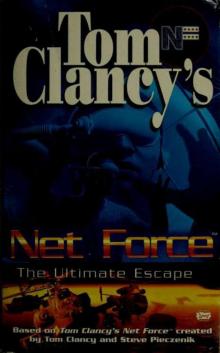 The Ultimate Escape
The Ultimate Escape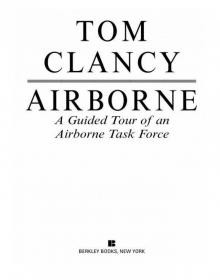 Airborne: A Guided Tour of an Airborne Task Force
Airborne: A Guided Tour of an Airborne Task Force Debt of Honor
Debt of Honor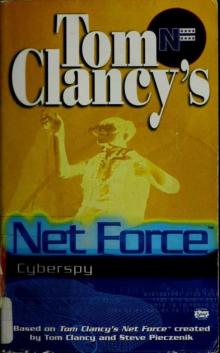 Cyberspy
Cyberspy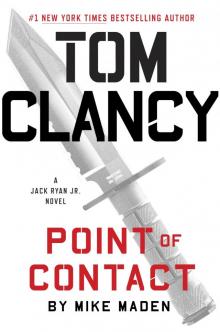 Point of Contact
Point of Contact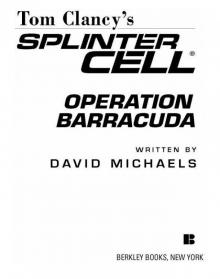 Operation Barracuda (2005)
Operation Barracuda (2005)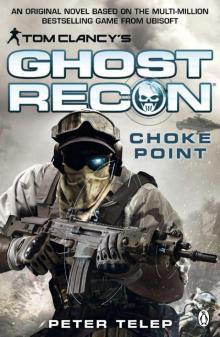 Choke Point
Choke Point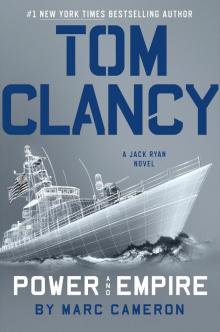 Power and Empire
Power and Empire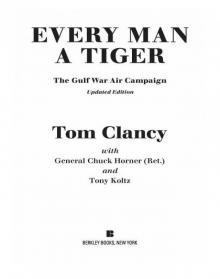 Every Man a Tiger: The Gulf War Air Campaign
Every Man a Tiger: The Gulf War Air Campaign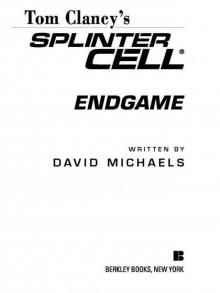 Endgame (1998)
Endgame (1998)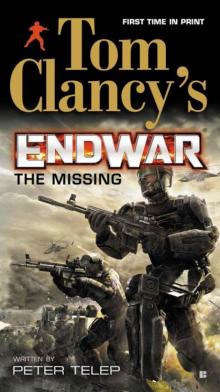 EndWar: The Missing
EndWar: The Missing Splinter Cell (2004)
Splinter Cell (2004)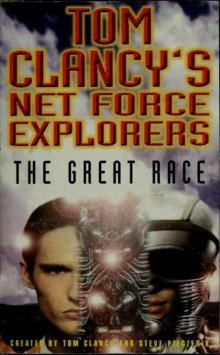 The Great Race
The Great Race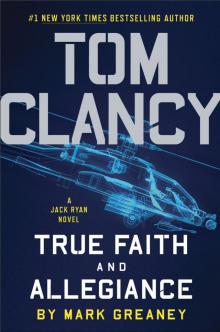 True Faith and Allegiance
True Faith and Allegiance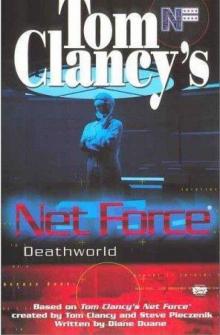 Deathworld
Deathworld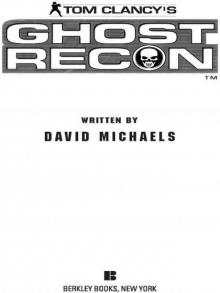 Ghost Recon (2008)
Ghost Recon (2008)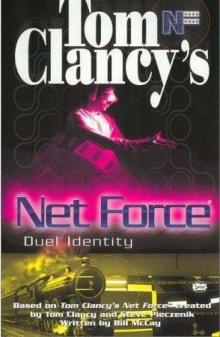 Duel Identity
Duel Identity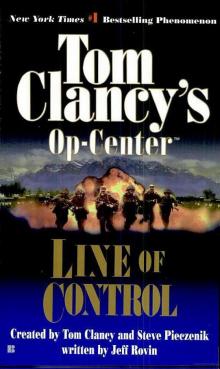 Line of Control o-8
Line of Control o-8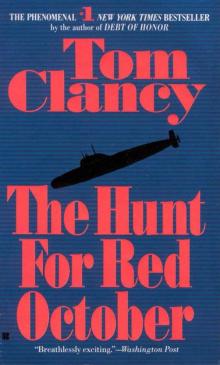 The Hunt for Red October jr-3
The Hunt for Red October jr-3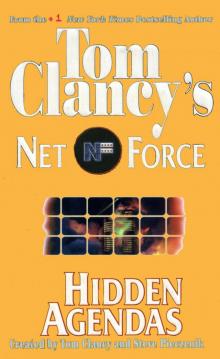 Hidden Agendas nf-2
Hidden Agendas nf-2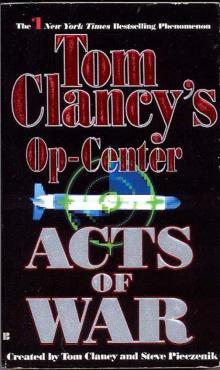 Acts of War oc-4
Acts of War oc-4 Ruthless.Com pp-2
Ruthless.Com pp-2 Night Moves
Night Moves The Hounds of Rome - Mystery of a Fugitive Priest
The Hounds of Rome - Mystery of a Fugitive Priest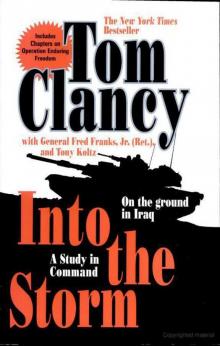 Into the Storm: On the Ground in Iraq sic-1
Into the Storm: On the Ground in Iraq sic-1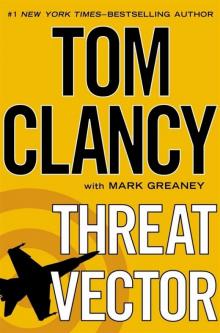 Threat Vector jrj-4
Threat Vector jrj-4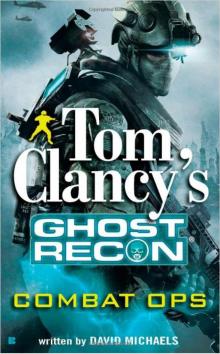 Combat Ops gr-2
Combat Ops gr-2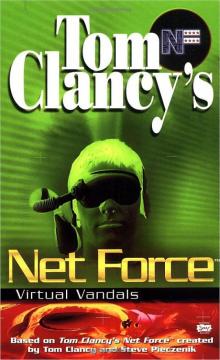 Virtual Vandals nfe-1
Virtual Vandals nfe-1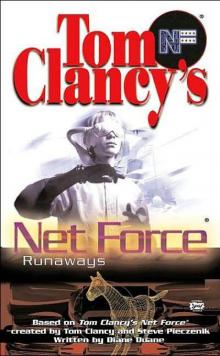 Runaways nfe-16
Runaways nfe-16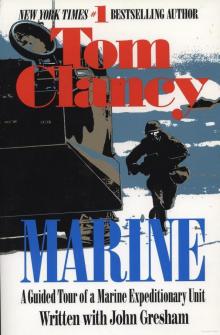 Marine: A Guided Tour of a Marine Expeditionary Unit tcml-4
Marine: A Guided Tour of a Marine Expeditionary Unit tcml-4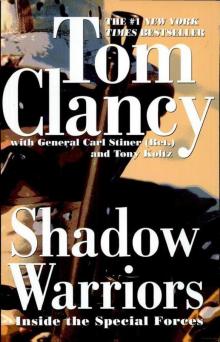 Shadow Warriors: Inside the Special Forces sic-3
Shadow Warriors: Inside the Special Forces sic-3 Jack Ryan Books 1-6
Jack Ryan Books 1-6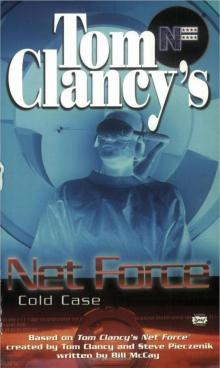 Cold Case nfe-15
Cold Case nfe-15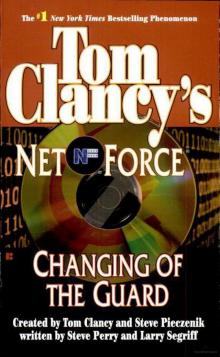 Changing of the Guard nf-8
Changing of the Guard nf-8 Splinter Cell sc-1
Splinter Cell sc-1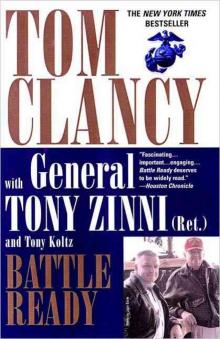 Battle Ready sic-4
Battle Ready sic-4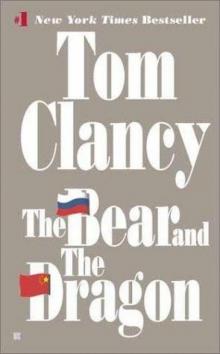 The Bear and the Dragon jrao-11
The Bear and the Dragon jrao-11 Fighter Wing: A Guided Tour of an Air Force Combat Wing tcml-3
Fighter Wing: A Guided Tour of an Air Force Combat Wing tcml-3 Patriot Games jr-1
Patriot Games jr-1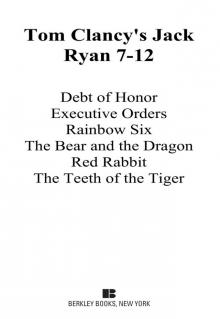 Jack Ryan Books 7-12
Jack Ryan Books 7-12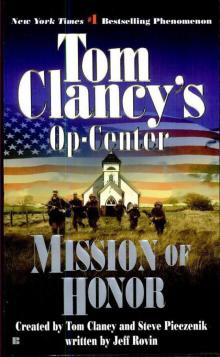 Mission of Honor o-9
Mission of Honor o-9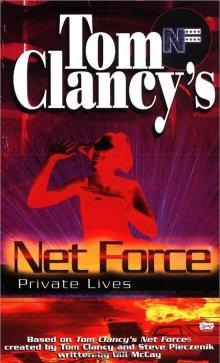 Private Lives nfe-9
Private Lives nfe-9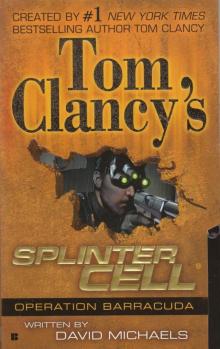 Operation Barracuda sc-2
Operation Barracuda sc-2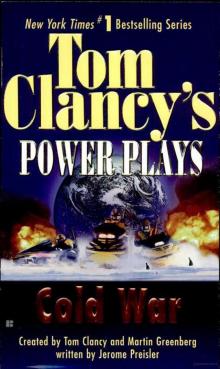 Cold War pp-5
Cold War pp-5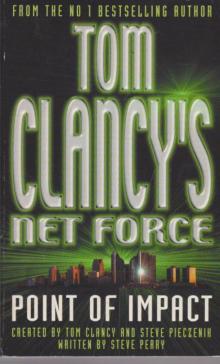 Point of Impact nf-5
Point of Impact nf-5 Red Rabbit jr-9
Red Rabbit jr-9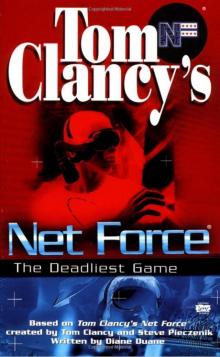 The Deadliest Game nfe-2
The Deadliest Game nfe-2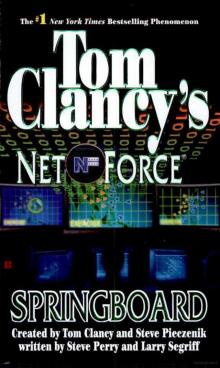 Springboard nf-9
Springboard nf-9 Safe House nfe-10
Safe House nfe-10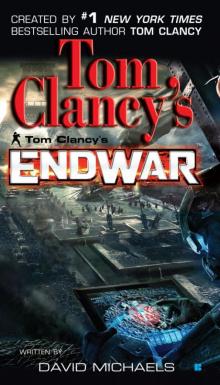 EndWar e-1
EndWar e-1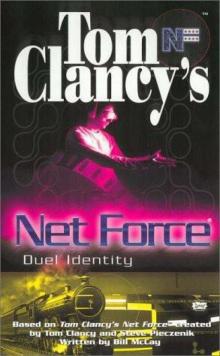 Duel Identity nfe-12
Duel Identity nfe-12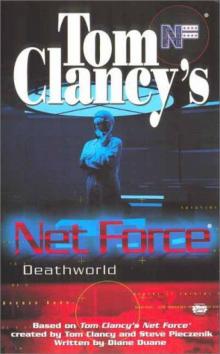 Deathworld nfe-13
Deathworld nfe-13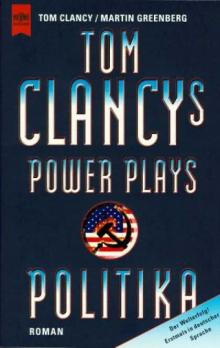 Politika pp-1
Politika pp-1 Rainbow Six jr-9
Rainbow Six jr-9 Tom Clancy's Power Plays 1 - 4
Tom Clancy's Power Plays 1 - 4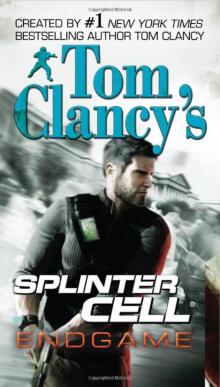 Endgame sc-6
Endgame sc-6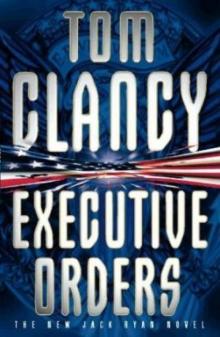 Executive Orders jr-7
Executive Orders jr-7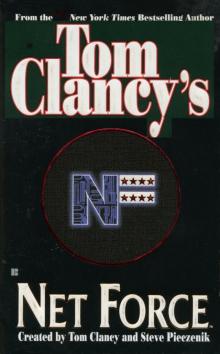 Net Force nf-1
Net Force nf-1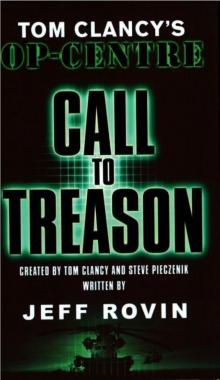 Call to Treason o-11
Call to Treason o-11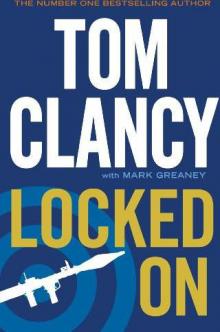 Locked On jrj-3
Locked On jrj-3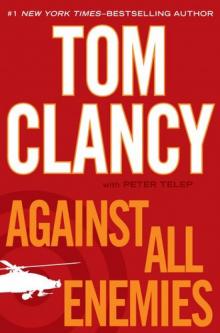 Against All Enemies
Against All Enemies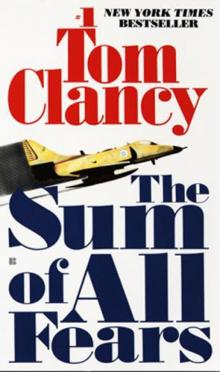 The Sum of All Fears jr-7
The Sum of All Fears jr-7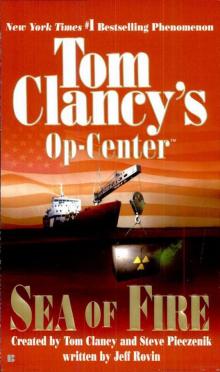 Sea of Fire o-10
Sea of Fire o-10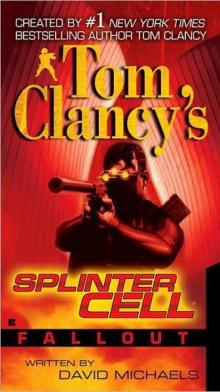 Fallout sc-4
Fallout sc-4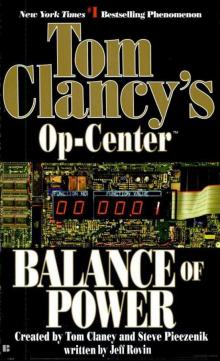 Balance of Power o-5
Balance of Power o-5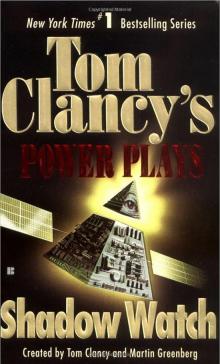 Shadow Watch pp-3
Shadow Watch pp-3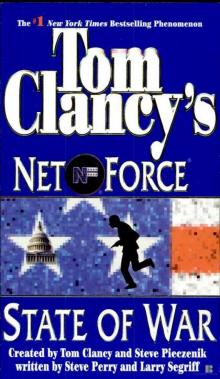 State of War nf-7
State of War nf-7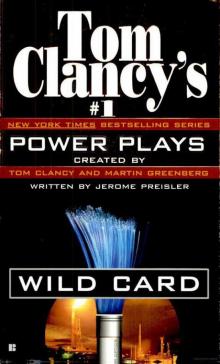 Wild Card pp-8
Wild Card pp-8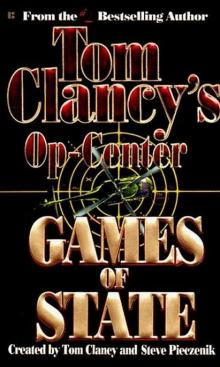 Games of State o-3
Games of State o-3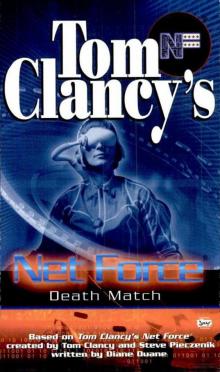 Death Match nfe-18
Death Match nfe-18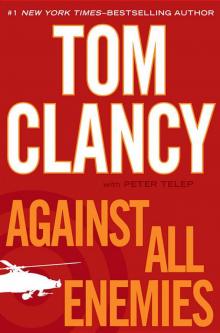 Against All Enemies mm-1
Against All Enemies mm-1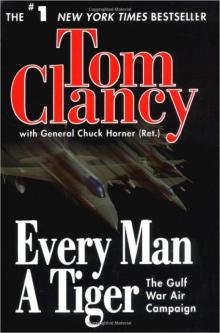 Every Man a Tiger: The Gulf War Air Campaign sic-2
Every Man a Tiger: The Gulf War Air Campaign sic-2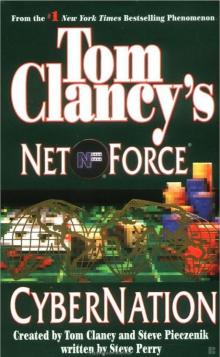 Cybernation nf-6
Cybernation nf-6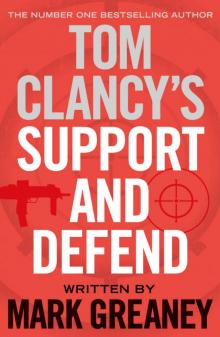 Support and Defend
Support and Defend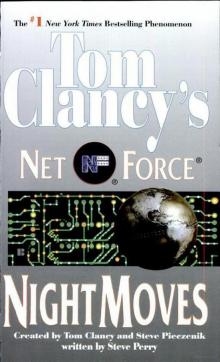 Night Moves nf-3
Night Moves nf-3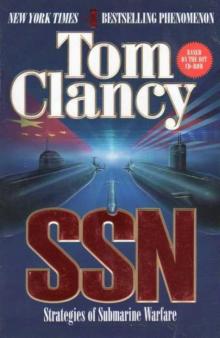 SSN
SSN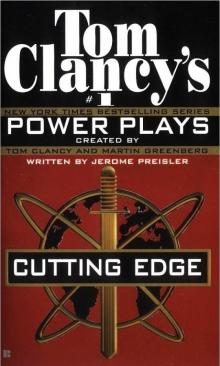 Cutting Edge pp-6
Cutting Edge pp-6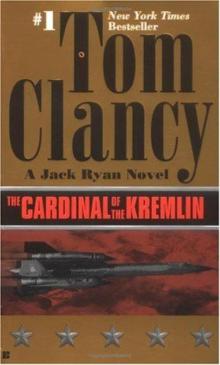 The Cardinal of the Kremlin jrao-5
The Cardinal of the Kremlin jrao-5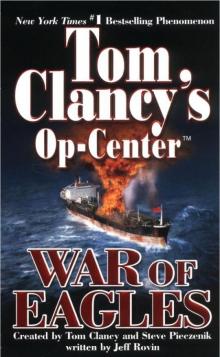 War of Eagles o-12
War of Eagles o-12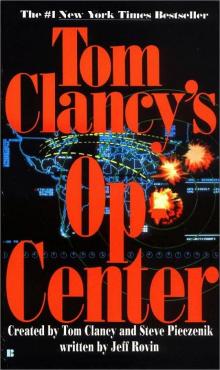 Op-Center o-1
Op-Center o-1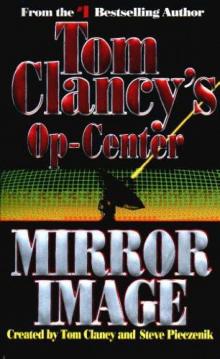 Mirror Image o-2
Mirror Image o-2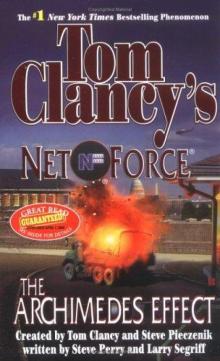 The Archimedes Effect nf-10
The Archimedes Effect nf-10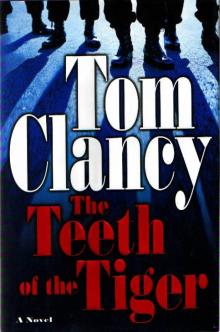 Teeth of the Tiger jrj-1
Teeth of the Tiger jrj-1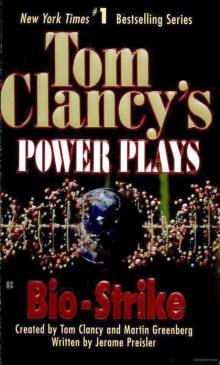 Bio-Strike pp-4
Bio-Strike pp-4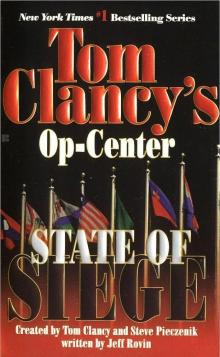 State of Siege o-6
State of Siege o-6 Debt of Honor jr-6
Debt of Honor jr-6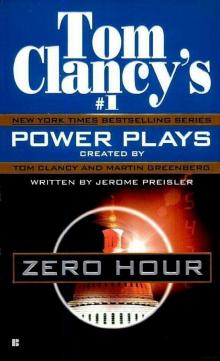 Zero Hour pp-7
Zero Hour pp-7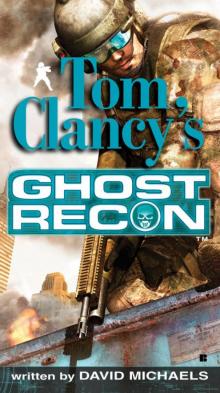 Ghost Recon gr-1
Ghost Recon gr-1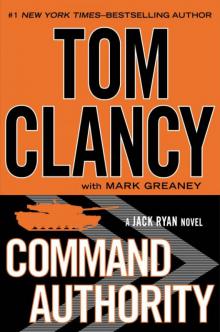 Command Authority jr-10
Command Authority jr-10 Tom Clancy's Power Plays 5 - 8
Tom Clancy's Power Plays 5 - 8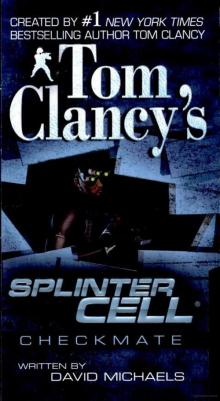 Checkmate sc-3
Checkmate sc-3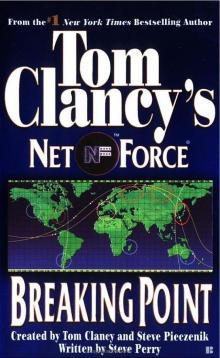 Breaking Point nf-4
Breaking Point nf-4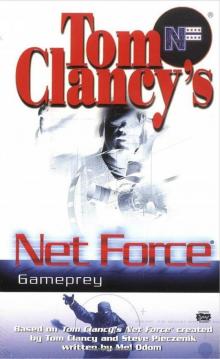 Gameprey nfe-11
Gameprey nfe-11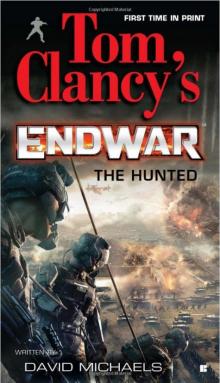 The Hunted e-2
The Hunted e-2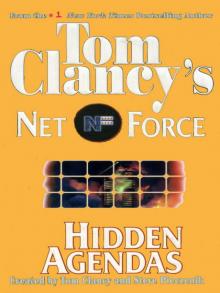 Hidden Agendas
Hidden Agendas Divide and Conquer o-7
Divide and Conquer o-7